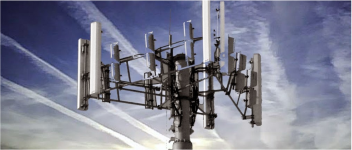Solution

SafeCell’s solution, CellBlock, does not impact or collect information from outside the perimeter of the prison, works with FCC approved cellular protocols and has a reasonable cost. Uniquely, CellBlock does not rely on any sort of “jamming” technology which is known to block all radio services including 911 and require extensive testing prior to implementation.
CellBlock eliminates the risk of contraband cell phone use inside correctional facilities and
meets the requirements laid out by the Bureau of Prisons:
- The equipment must work without impacting or collecting information from the
general public located outside the secure perimeter - The solution should have no legal restrictions
- The equipment must work with all cellular phone protocols
- The overall cost of equipment and installation must be reasonable.
Please see the chart below which illustrates SafeCell relative to other technological approaches. The SafeCell comparison column in blue illustrates how SafeCell meets Bureau of Prisons requirements:
| Technological Comparison for Combating Contraband Cellular Units in Prisons | ||||||||
| SafeCell's CellBlock | Jamming | Managed access | Detection | NLJDs | Hybrid/DRT | Standard protocols | ||
| Covers all frequency bands | Yes | Yes | Yes | Yes | Detects devices | With equipment changes and carrier consent | If protocols are established in the various devices | |
| System Circumvention | No - CellBlock disables non-whitelisted units | No | Yes, changing SIM cards can allow units to function again | NA | NA | NA | NA | |
| Ease of Management | End user installed application for registration and monitoring upon management approval | Most be continually monitored | Can be labor intensive | Prison personnel continued monitoring required | Prison personnel continued monitoring required | Prison personnel continued monitoring required | Prison personnel continued monitoring required | |
| Potential to interfere with other radio services | No, meets all FCC requirements, no danger of interference outside prison | Yes- depending on deployment | Yes; requires complex installation and operation; potential to cause interference outside prison and adjacent areas | No-does not transmit | No | No for detection-only; yes same as managed access | No | |
| Protects 9-1-1 and authorized calls | 9-1-1 yes; authorized calls from units in whitelisted databased only | Not in jammed area | 9-1-1 yes in most cases | Yes-only detects | Yes | Yes | No-all phones are locked within the boundaries | |
| Identifies location | Yes | No | Yes | Yes | Through physical research | Yes, with portable device | No | |
| Cost considerations | Very competitive and well within the reasonable threshold price range | Extensive testing prior to implementation; can vary based on complexity of site; infrastructure costs | Depends on coverage, frequency bands, vary based on complexity of site; connectivity infrastructure costs | Hand-held units less expensive; number of sensors, installation | Less expensive; requires staff time and risk | Implementation costs can be expensive | Inexpensive Bluetooth communications | |
| Regulatory/legal issues | Requires FCC regulatory authorizations and agreements between system vendor and carriers | Illegal for non-Federal entities; pending legislation for case-by-case jamming | Requires FCC regulatory authorizations and agreements between system vendor and carriers; any data mining may have legal implications; trap and trace issues with State and locals | None | None | Trap and trace issues with State and locals for data mining capabilities; requires regulatory authorizations between vendor and carriers | Impose a $1 per-phone fee to offset installation costs | |
| Technical issues/other issues | RF engineering needed as with all forms of communication | Depends on size, shape, structure; RF engineering needed | RF engineering needed; all forms of communication | Location accuracy; sense any technology | Must be very close to phone; overt | RF engineering needed | Adoption of protocols by industry; conceptual only | |
